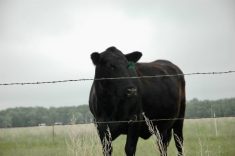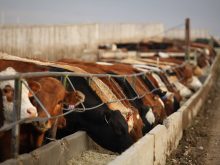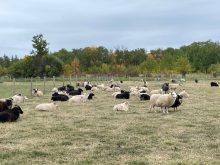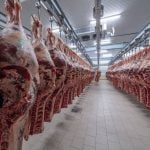McDonald’s sales dropped in the first quarter, marking the second consecutive quarter of declines as its customers pull back spending amid economic uncertainty.
Visits from low-income consumers are down nearly double digits from last year and middle income is also declining. U.S. same-store sales dropped 3.6 per cent; the decline was the worst drop since COVID of 2020.
Wholesale beef prices have been hovering at historical highs during May. For the week ending May 3, wholesale choice beef was averaging US$343/cwt while select product was valued at US$324/cwt.
Read Also

Gentle treatments for pain in the neck
Heading toward year-end, people unknowingly tense up against the cold and busyness, causing neck pain that can often be treated with appropriate support and gentle mobility, athletic therapist Kathlyn Hossack says.
In Kansas, live cattle were trading as high as US$218/cwt. In southern Alberta, packers were buying cattle on a live basis at $294/cwt. Live cattle prices on both sides of the border have made fresh record highs during the first week of May. Break-even pen closeouts in Alberta are in the range of $255-$265/cwt, f.o.b. feedlot. Feeding margins have been favourable during the first five months of 2025, causing the feeder market to trend higher.
At the time of writing this article, larger-frame, lower-flesh Charolais steers averaging 850 lbs. were valued at $420/cwt in central Alberta while higher quality 500-lb. steers were bringing back $570/cwt.
Market-ready supplies on both sides of the border are at seasonal lows. Analysts use the placement data from the U.S. Department of Agriculture’s Cattle on Feed reports to project the number of cattle available for slaughter each month. You can see in the table here that the monthly numbers start to build in May and June. More importantly, supplies are not much different than last year’s.

Given the higher prices, U.S. packers have curtailed the weekly slaughter pace, and we find fed cattle supplies are becoming backed up in U.S. feedlots. Cattle on feed 150 days or longer in the U.S., as of April 1, were 3.272 million head, up 134,000 head from April 1, 2024. The average U.S. dressed weight for the week ending May 3 was 877 lbs., up 25 lbs. from the same week of 2024. The placement data reflects market-ready cattle supplies will be around 1.958 million head during June. Given the lower slaughter pace in March, April and May, market-ready cattle supplies will probably reach 2.2 million head on June 15.
In Western Canada, a similar environment is developing. Market-ready fed cattle supplies moved from an extremely tight situation in April to a rather burdensome environment in June and July. Market-ready fed cattle numbers in Alberta and Saskatchewan were estimated at 90,000 head during mid-April. This number increases to about 300,000 head in mid-June. Canadian packers have also cut back on the weekly slaughter as it’s harder to sell wholesale beef at the higher levels. When there are larger fed cattle supplies, the market usually trends lower.
U.S. first-quarter gross domestic product came in 0.3 per cent lower by quarter-over-quarter annual rate, down from growth of 2.3 per cent in the final quarter of 2024. Consumer spending is easing given the uncertainty in the economy. Remember, consumer spending and beef demand are highly correlated.
Restaurant and grocery store spending tend to make seasonal highs in May, then slightly soften in June and July. The main point is that demand is not increasing. Looking at past history, the live cattle market lags the economy by four to six months. Fed cattle prices will feel the effects of softer demand during the summer, which is right when supplies are increasing.
At historically high prices, markets also function to encourage expansion. The industry is bracing for significant heifer retention in Canada and the U.S. this summer. This will result in lower feeder cattle supplies outside finishing feedlots in the latter half of 2025.
Feedlot operators usually endure one round of negative margins before there is a significant downward shift in the feeder market. Given the deferred live cattle futures, feeding margins will slowly move into negative territory during the summer and fall period.
For August and September delivery, 1,000-lb. steers have been trading in the range of $345-$360/cwt, depending on the quality. Cow-calf producers can use that as a guide for purchasing grassers. Margins are fairly snug for backgrounding calves over the summer or for putting cattle on grass. Margins will eventually move into negative territory and when that occurs, it’s a sign the feeder market is at or near its highs.
















